Our view at Stack - Simplify growth with an all-in-one platform. Powerful marketing, sales, and support automation. Integrated CMS. Scalable software. Crafted for customer experience.
There’s always a new tool, platform, process, you name it, that you just have to try.
It’s exhausting as a content creator to try to keep up with the latest trends and time-consuming to learn how to use completely new platforms. It can also feel risky to start creating content somewhere new when where you are is already working for you.
![Download Now: 150+ Content Creation Templates [Free Kit]](https://softwarestack.tech/wp-content/uploads/2024/03/5478fa12-4cc3-4140-ba96-bc103eeb873e.png)
But it is my professional opinion that if you are a writer (or reader), you must get acquainted with Substack.
Self-described as “a new economic engine for culture,” it launched in 2017 and has become a popular space for everyone from famed, professional authors to young 20-somethings looking for a place to air their grievances.
It’s the perfect blend of blog, magazine, and newsletter, with the bonus of a kind and thought-provoking community. Still skeptical? Read on for more information about Substack and some tips and best practices for writers and readers alike.
Table of Contents
- What Is Substack?
- Why Use Substack as a Content Creator or Writer?
- How to Use Substack as a Writer
- How to Use Substack as a Reader
- Substack Best Practices
The model allows writers to keep approximately 90% of the money from paid subscriptions, while 10% goes back to Substack.
Substack does more than allow writers to curate a space for their content — it also provides tools for authors to send and manage email newsletters.
Content creators can also discover new writers on the platform, and pay the love forward by subscribing to other writers.
Why Use Substack as a Content Creator or Writer?
As a writer, I struggle to know where I should share my writing. I could stick to social media and post content on X, but this limits my audience to followers and similar thinkers.
While there are many ways to make money on social media, they typically involve partnering with brands on sponsored content or paid ads, which takes away some of the autonomy in your writing.
The beauty of publishing content on Substack is that it’s designed to give creators freedom of thought and speech while helping those creators monetize their work. You’d be hard-pressed to find a platform that is as determined to help writers succeed — after all, Substack only makes money if you do.
Substack is popular amongst writers, journalists, and creators looking to publish independent content digitally. On Substack, writers own their intellectual property while still publishing it in a public space.
It differs from competitors like WordPress because it lets writers set up podcasts, upload videos, and build a consistent audience.
Something that sets Substack apart from other content creation platforms is the chance to connect authentically with your audience. George Saunders mentioned in an Esquire article, “With Substack, I’m talking to the same people almost every day, every week. It’s given me a deeper experience of my readers.”
If you’re a fan of Saunders’ work, you’ll be pleased to hear he is one of many celebrated writers and creators who publish on Substack, including Margaret Atwood, Elizabeth Gilbert, and Kareem Abdul-Jabbar.
According to Backlinko research, Substack has more than 2 million paid subscriptions and more than 500,000 paying subscribers. More than 17,000 writers get paid for their newsletters on Substack, and the 10 highest-paid authors on Substack collectively make more than $25 million per year.
While you may not have plans to be in that top 10, it’s evident there is a market for subscribers willing and excited to pay for access to your original content.
The ability to publish and easily send email newsletters of your work via Substack is a huge plus, as it helps you reach audiences that may not be on Substack.
Email newsletters can be tricky to manage and perfect, so you can refer to our guide to email newsletters to ensure you apply the best tips and tricks for your Substack publication.
How to Use Substack as a Writer
I’ll admit I had only read a few free Substack posts before and had never published my own, so I set off to do just that before diving into this post. See some steps below for how to start using Substack as a writer.
1. Create an account.
I know; I’m truly starting with the basics. But, I think it’s important to understand how best to set up your account for success.
If you have an existing mailing list from another platform, like WordPress or Mailchimp, you can upload it when you set up your account.
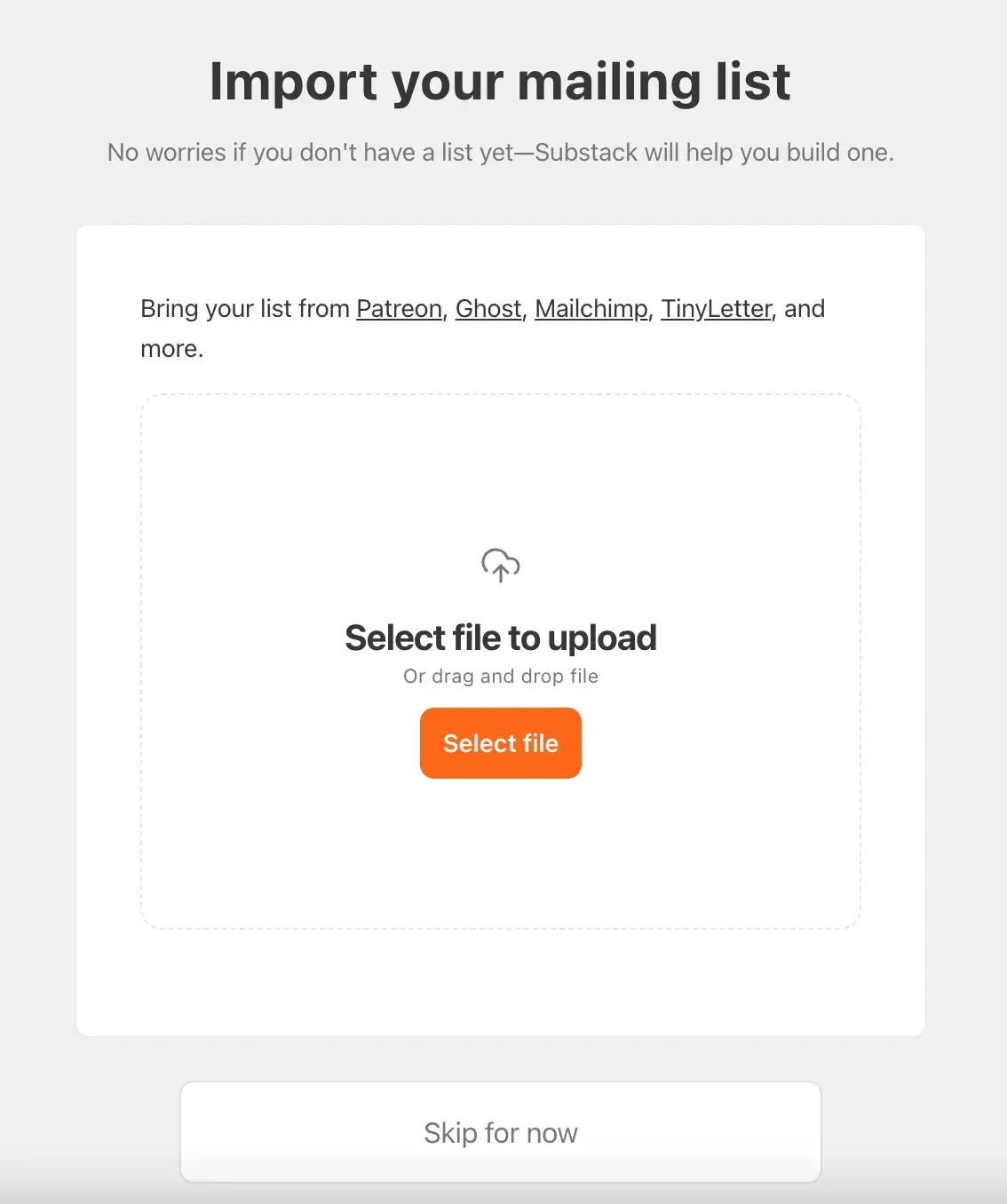
If not (like me), you can manually add people to your subscriber list, if you so choose. To get started, I included 13 friends as subscribers.
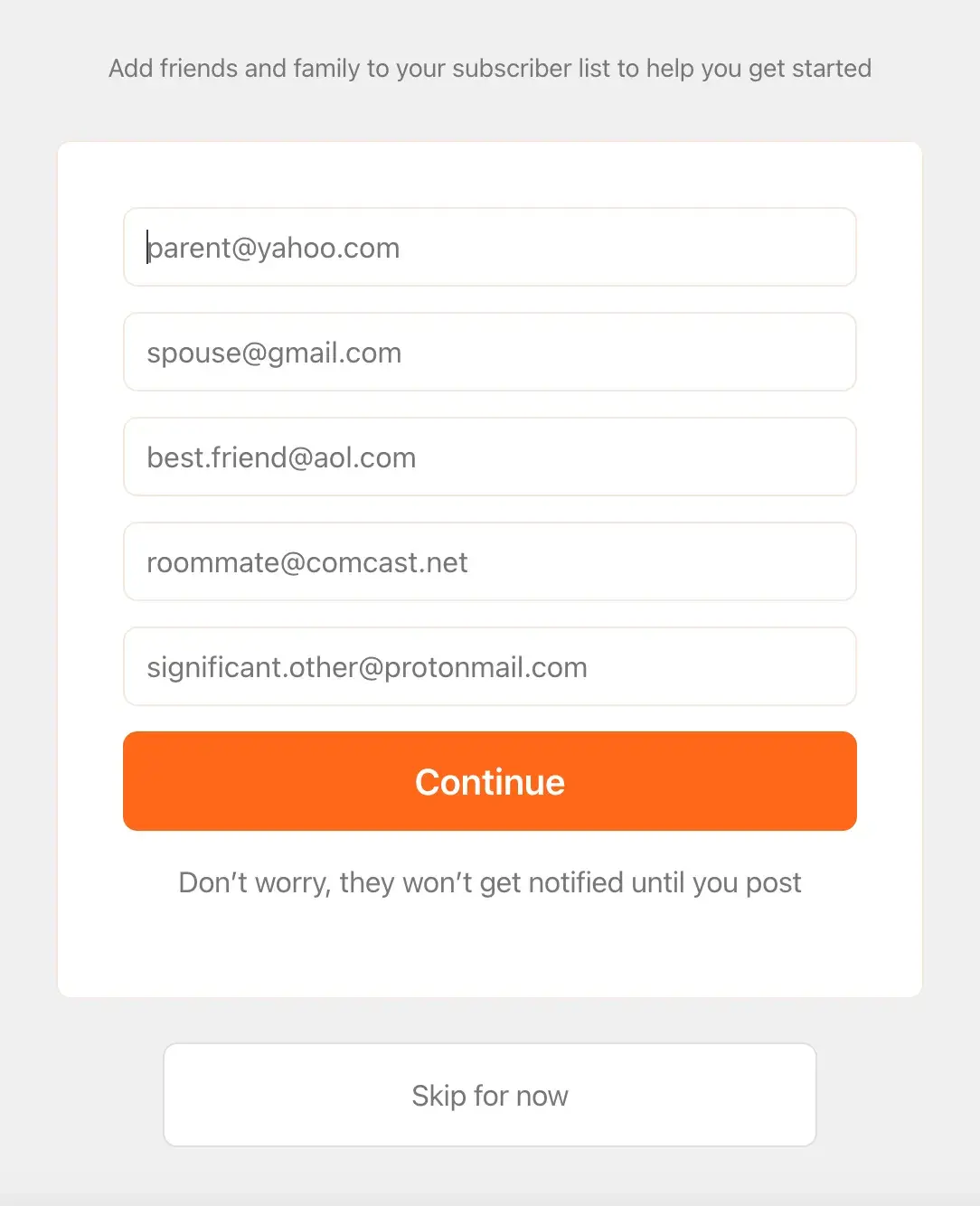
If you have an existing audience, I strongly advise you to import it.
It’s possible to build your audience from the ground up on Substack (more than 50% of all new free subscriptions and 25% of paid subscriptions come from within its network, according to the platform).
But it never hurts to start with the cushioning of people who already consume and enjoy your content.
I also decided to set up my account for free and not connect to Stripe (yet).
Since I don’t currently have an audience on Substack, it doesn’t make sense to ask readers to pay to subscribe to my content. They don’t even know what they’re signing up for!
If you have a large audience who already pays for your work elsewhere, you may consider immediately diving into a paid subscription model, but you can always add this later. Why not give your fans a taste of what they can expect, first?
2. Manage your writer dashboard.
Once you’ve created your account, you’re ready to begin your journey as a Substack writer! But first, you should take a look in your writer dashboard to see what steps are still pending your review.
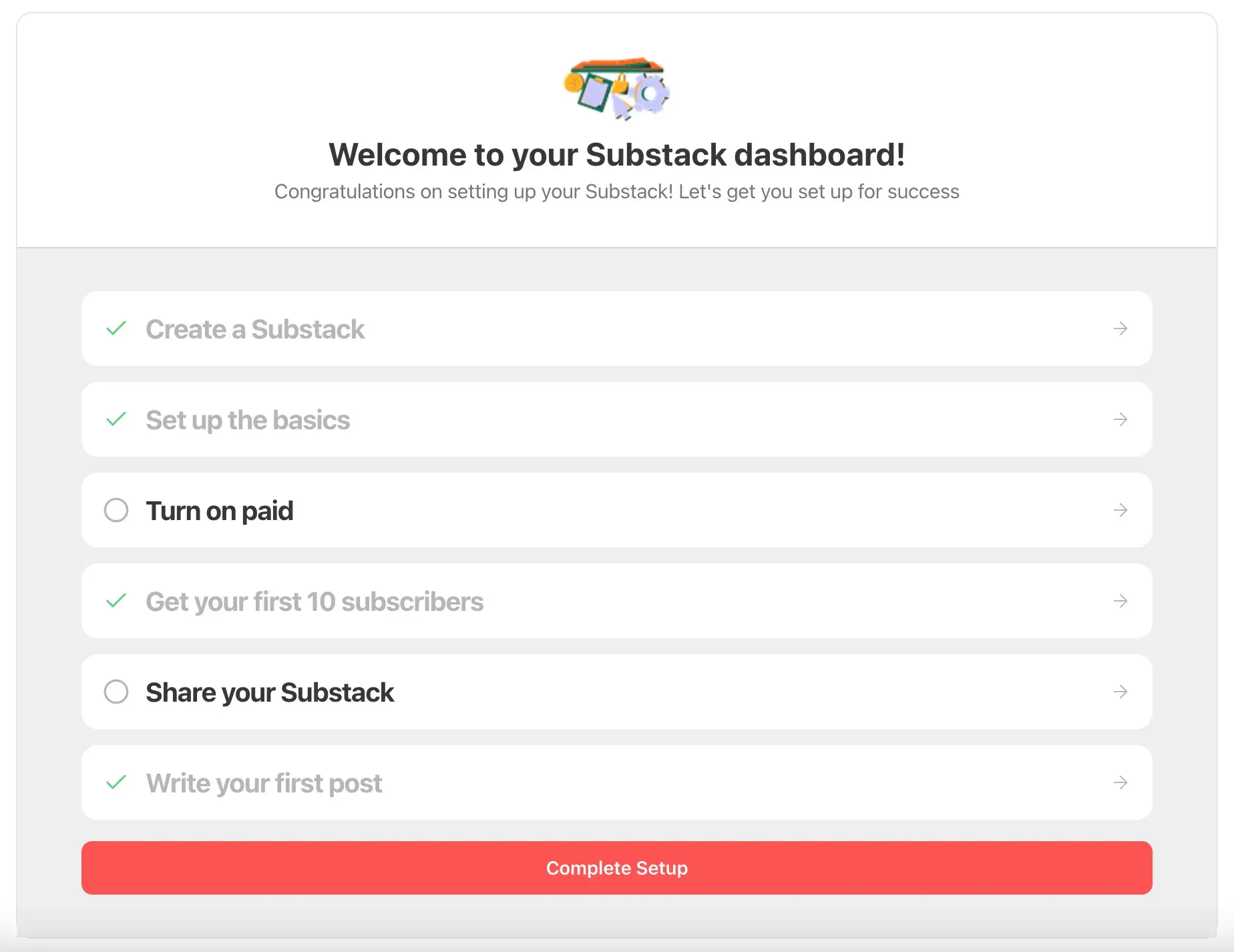
Since I’ve already written my first Substack post and uploaded more than 10 subscribers, you will see that both are checked off on my dashboard. Other tasks to work on are turning on paid (which you can do at any point) and sharing your Substack (which I recommend doing as soon as you’ve written your first post).
At the bottom of your writer dashboard, you’ll find some resources to help you get started on Substack.
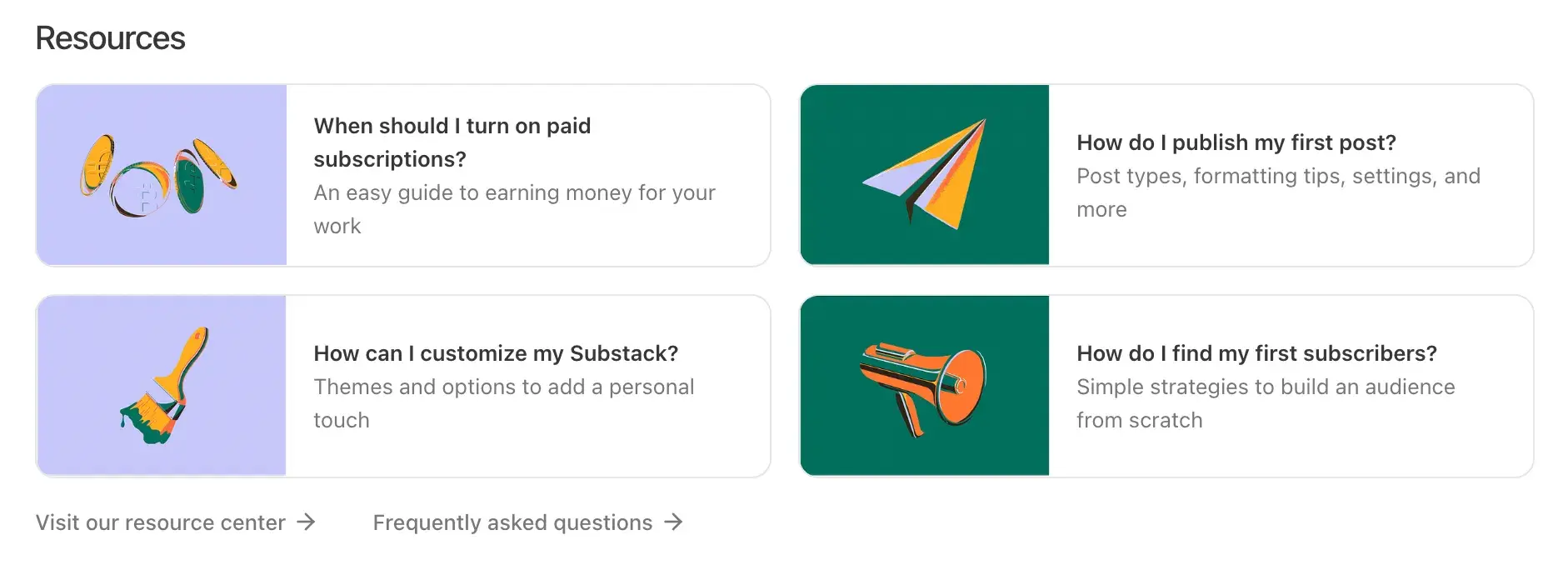
I especially enjoyed the “When should I turn on paid subscriptions?” guide, which detailed some great options to utilize a paid subscription, such as pay-walling your posts but using the free preview tool to give readers a sample of your work to entice them to subscribe.
Your writer’s dashboard is also where you can edit your Substack’s name, look, and feel. If you toggle to the tab “Settings” you can update your publication name, site design, about page, logo, branding, and much more.
3. Create your first post(s).
Finally, we’re on to the fun part! I decided to write a brand-new post for my Substack debut (which you can check out here!) but many writers may consider uploading an existing piece of content to begin.
This can either be a piece you’ve previously written that has yet to see the light of day or, more usefully, a piece you’ve already published that has gained traction elsewhere. If there was a likeability and shareability to the topic on a different platform, that’s a good sign that it will perform well on Substack.
If you decide to go the paid route, you could repost some existing posts as free content to grab the attention of new subscribers, and then start posting new content under a paid subscription model.
4. Test and publish your post.
Once you’ve finished your post, you can preview how the post will look in various formats: mobile versus desktop, web versus email, and free versus paid subscribers.
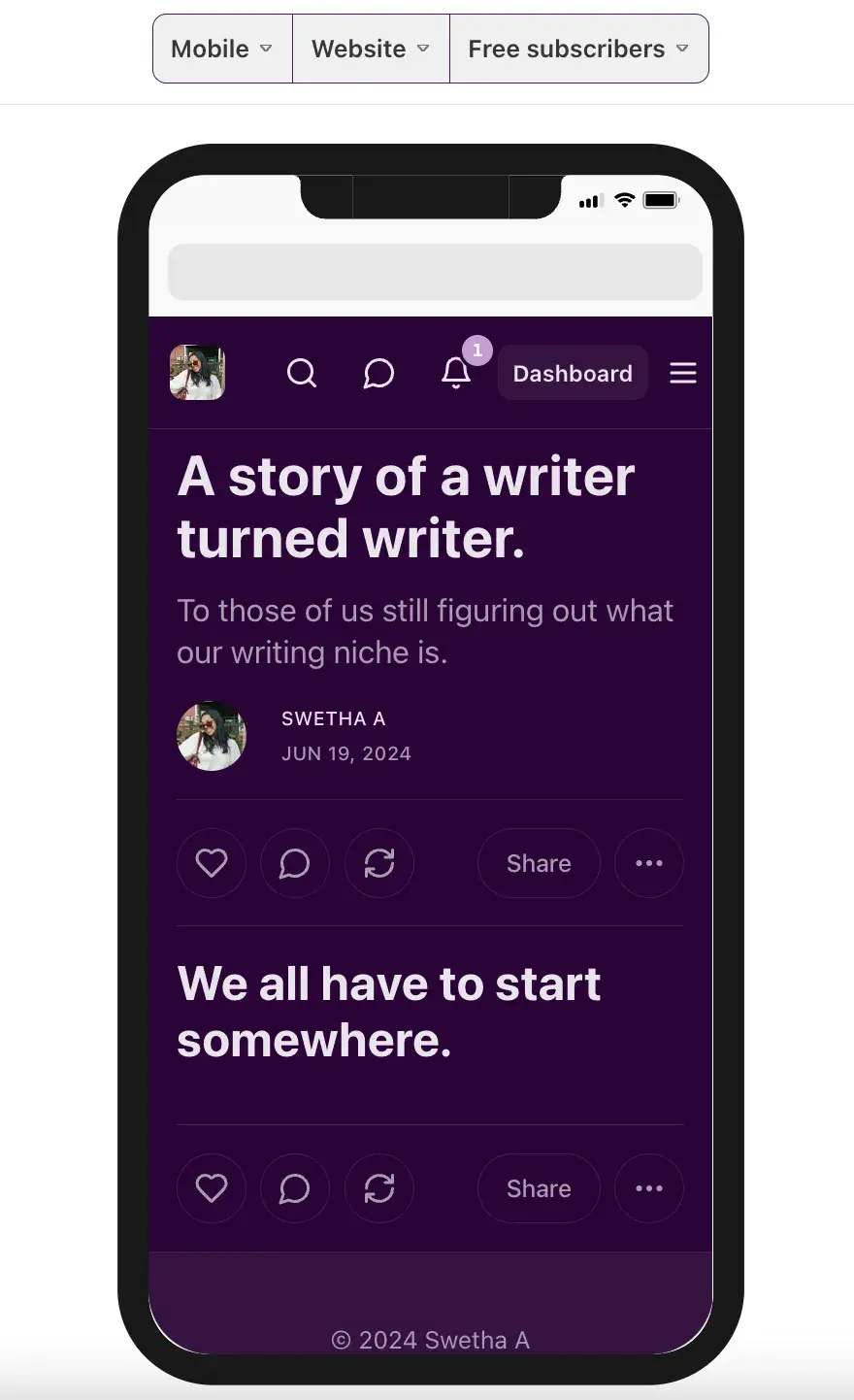
If you’re happy with how the post looks in its various formats, you can send a test email to yourself to ensure the text and image formatting looks correct. I also used this to verify my first post didn’t appear too long on mobile.
I knew it would be a 4-minute read, but I didn’t want subscribers to be deterred by a lengthy email.
After you’ve tested, you can finally publish your post! Substack will bring you to the below screen, where you have the option to share your post to many platforms, such as Instagram or LinkedIn, or copy the link if you’d prefer to distribute it yourself.
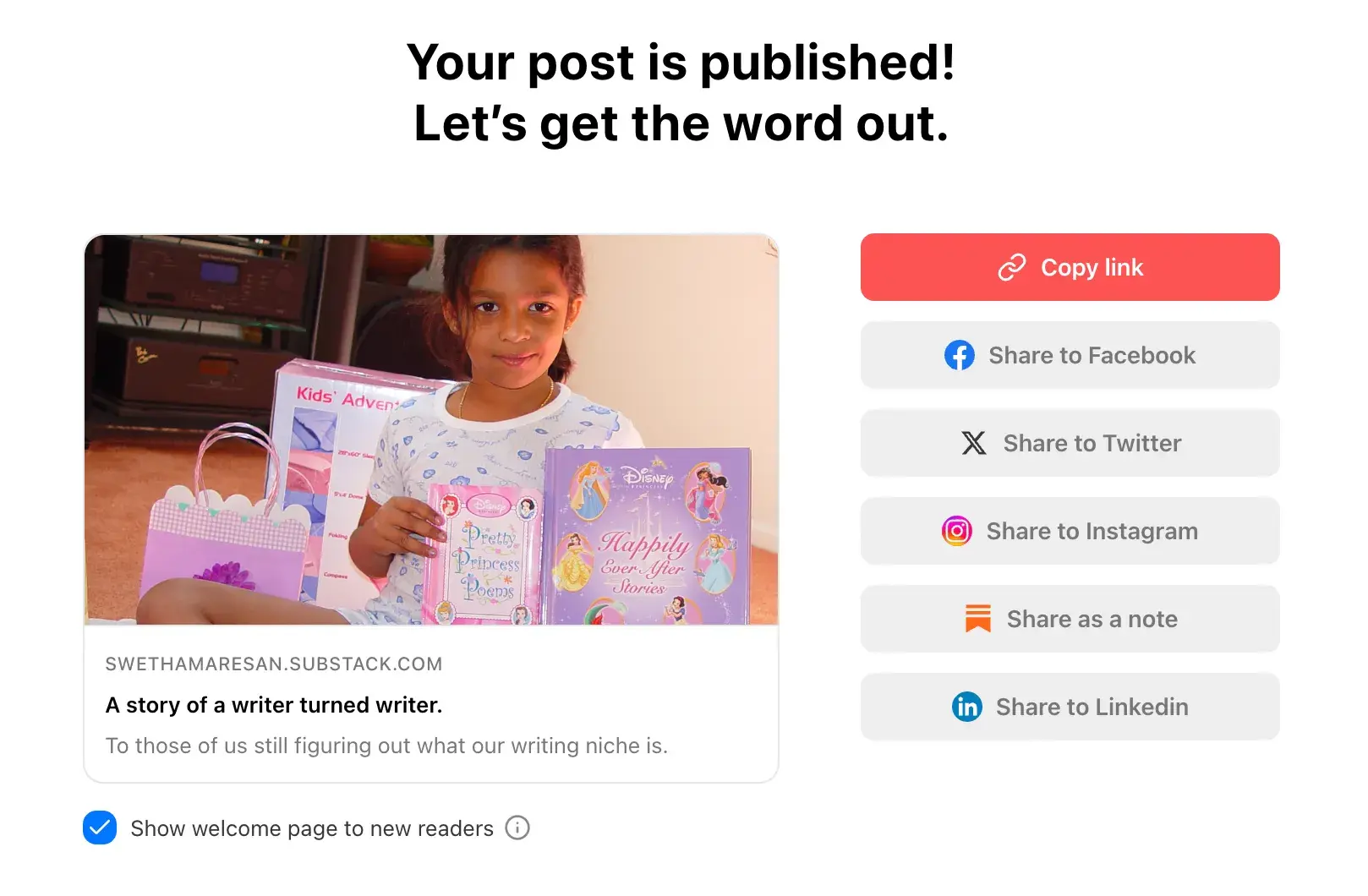
Substack creates free images you can download and share on Instagram Stories or in-feed to promote your post. It’s another example of how Substack can offer so much to content creators for free that helps you advertise your work.
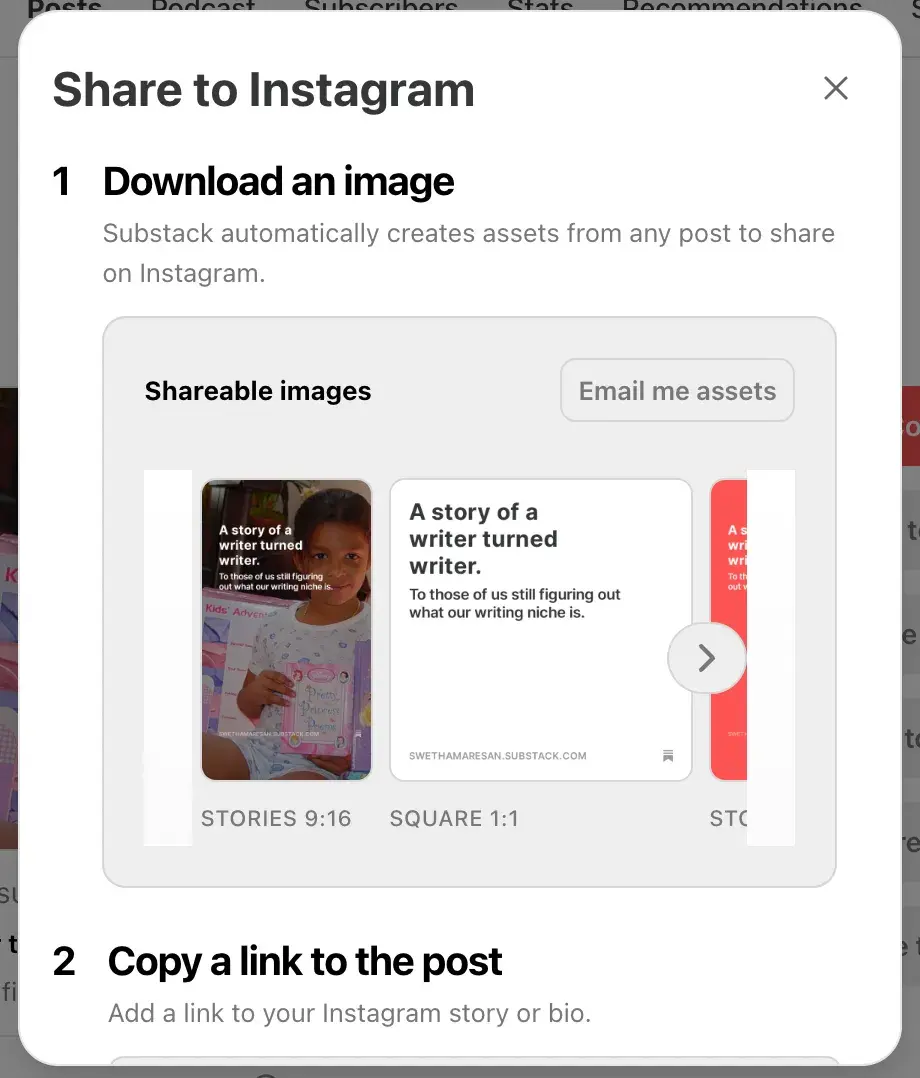
I shared my post to my Instagram Story and then checked my email where I received my published post as an email newsletter.
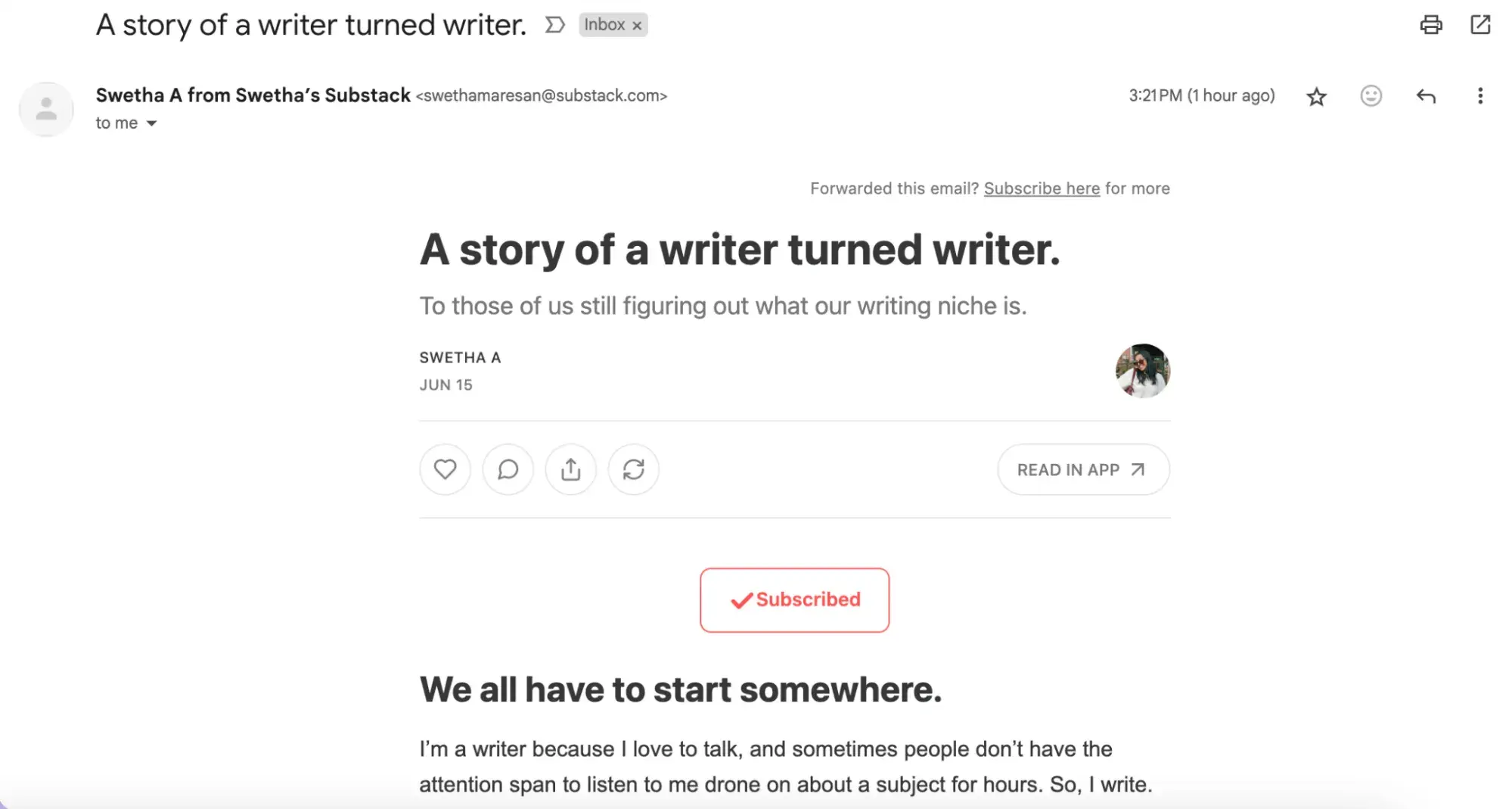
In the top right corner of the email, it says “Forwarded this email? Subscribe here for more.” This is another great tip — you can forward a copy of the email newsletter to people, free of charge, to encourage them to subscribe (paid or otherwise) to your publication.
5. Keep track of your stats.
Your writer’s dashboard has a Stats tab that’s an amazing place to track the performance of your posts and newsletter.
I can see the traffic to my Substack after my first post and how those readers found it (outlined below), my email open rate, info on my subscribers, and more.
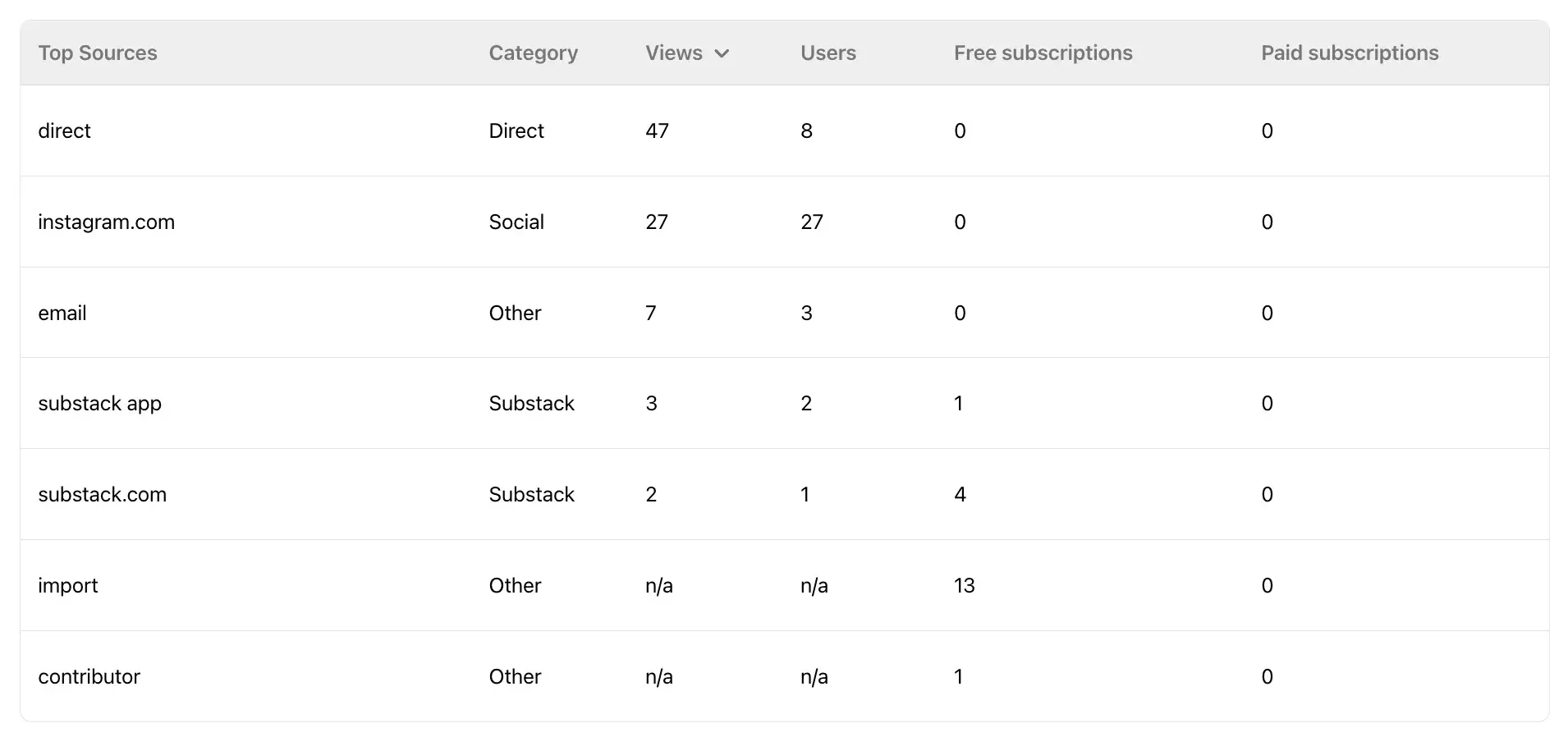
As important as our freedom of thought is, it’s equally as important to ensure people are actually finding and reading our thoughts. Substack gives you some power as a writer with the Stats tab to figure out where most people find your content and meet them where they are.
You can also edit and create a New Reader Survey which can help you get more demographic information about your readers. This also enables you to understand your target audience and can encourage you to produce content that would be most appealing to those audiences.
For instance, if I saw most of my readers were based in the U.S. and aged 18-24, I could research what current American college students are most interested in, and try to incorporate some of my findings into my writing.
6. Discover and recommend other writers.
Any writer knows the value of a recommendation from another writer. That gives you a much-needed ego boost while also opening you up to the fans of that writer’s work.
Subtack has an Explore feature which you can use to discover other content. While this feature is especially helpful for readers, it’s a great way for writers to find other strong or similar writers.
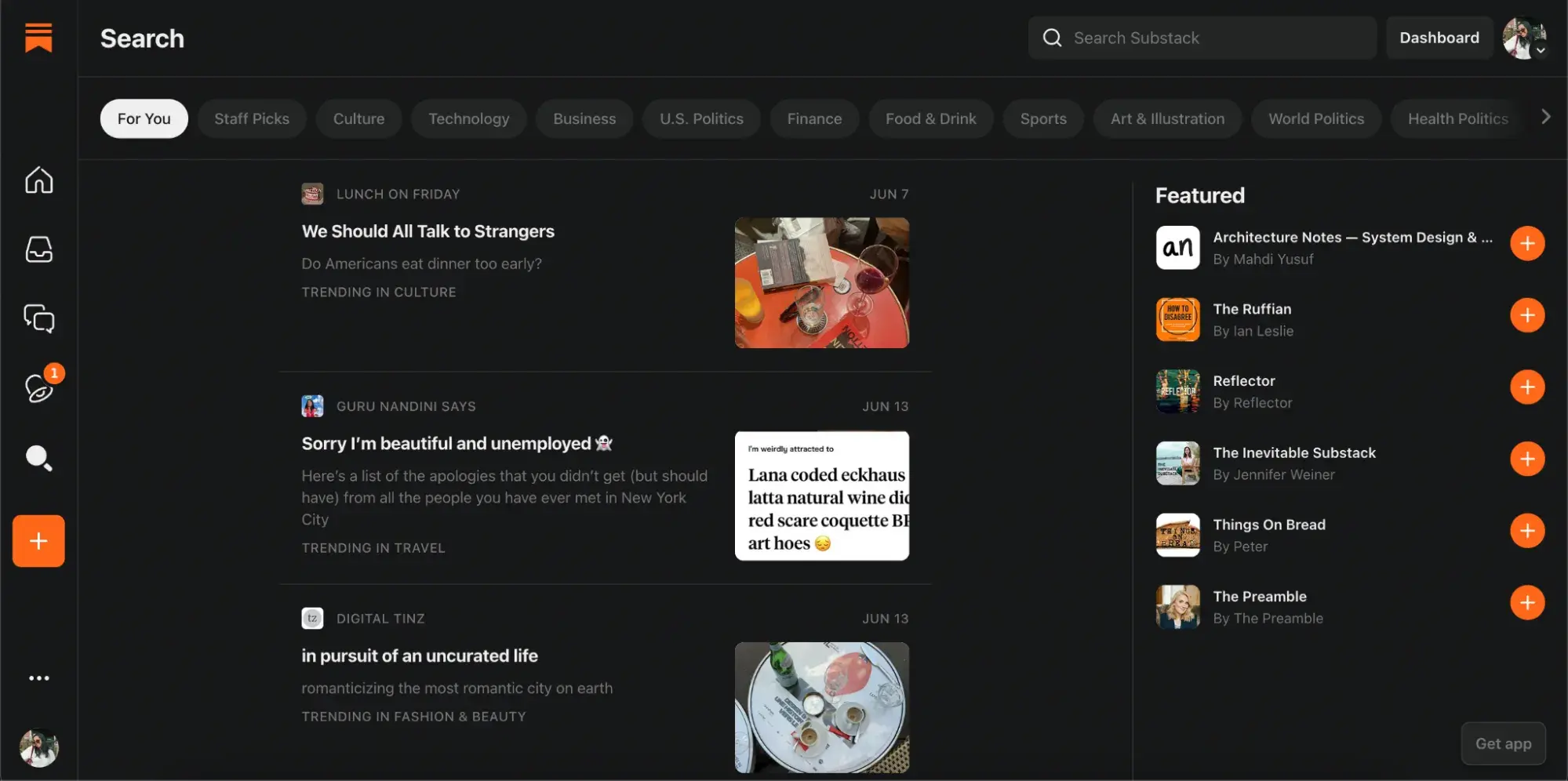
Once you find a writer you feel passionate about, you can click “Recommend” on their Substack. On your profile, their publication will appear under “Recommendations” to anyone who views your page. Below, you can see that I’ve recommended my friend Ginny King’s Substack.
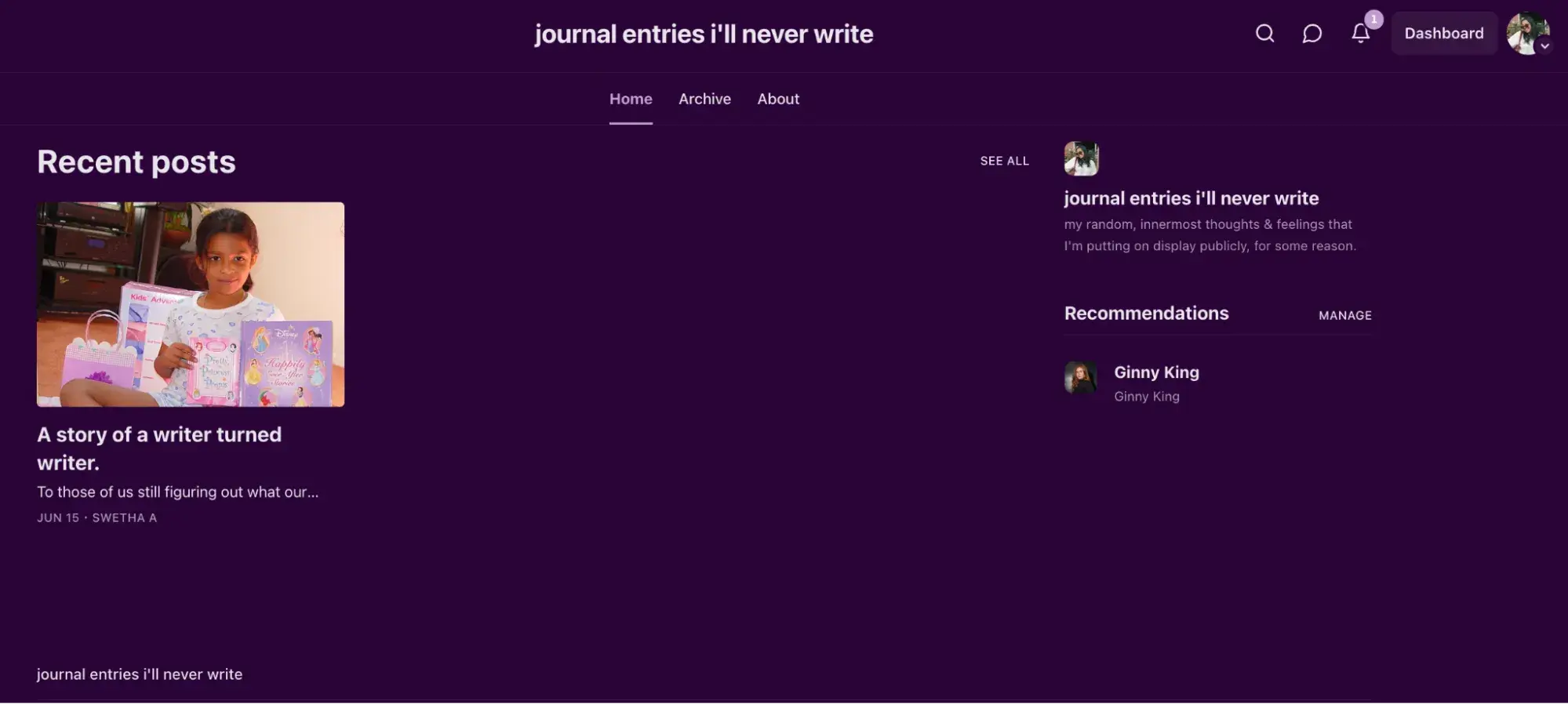
Recommending writers offers your readers other trusted publications to invest time and money and positions you as a writer willing to support other writers. And that is sure to encourage other writers to return the favor.
How to Use Substack as a Reader
While I’ve thoroughly enjoyed my first experience at writing on Substack, I’ve especially loved exploring the platform as a reader. Read on for some of my best tips for using Substack as a reader:
1. List your interests during sign-up.
The hardest part about joining Substack as a reader may be finding the publications that spark your interest.
Like a social media platform, it takes some time for Substack to figure out your “algorithm” and target you with content it believes you will enjoy.
You can help move this process along by initially selecting your interests when you sign up for your account.
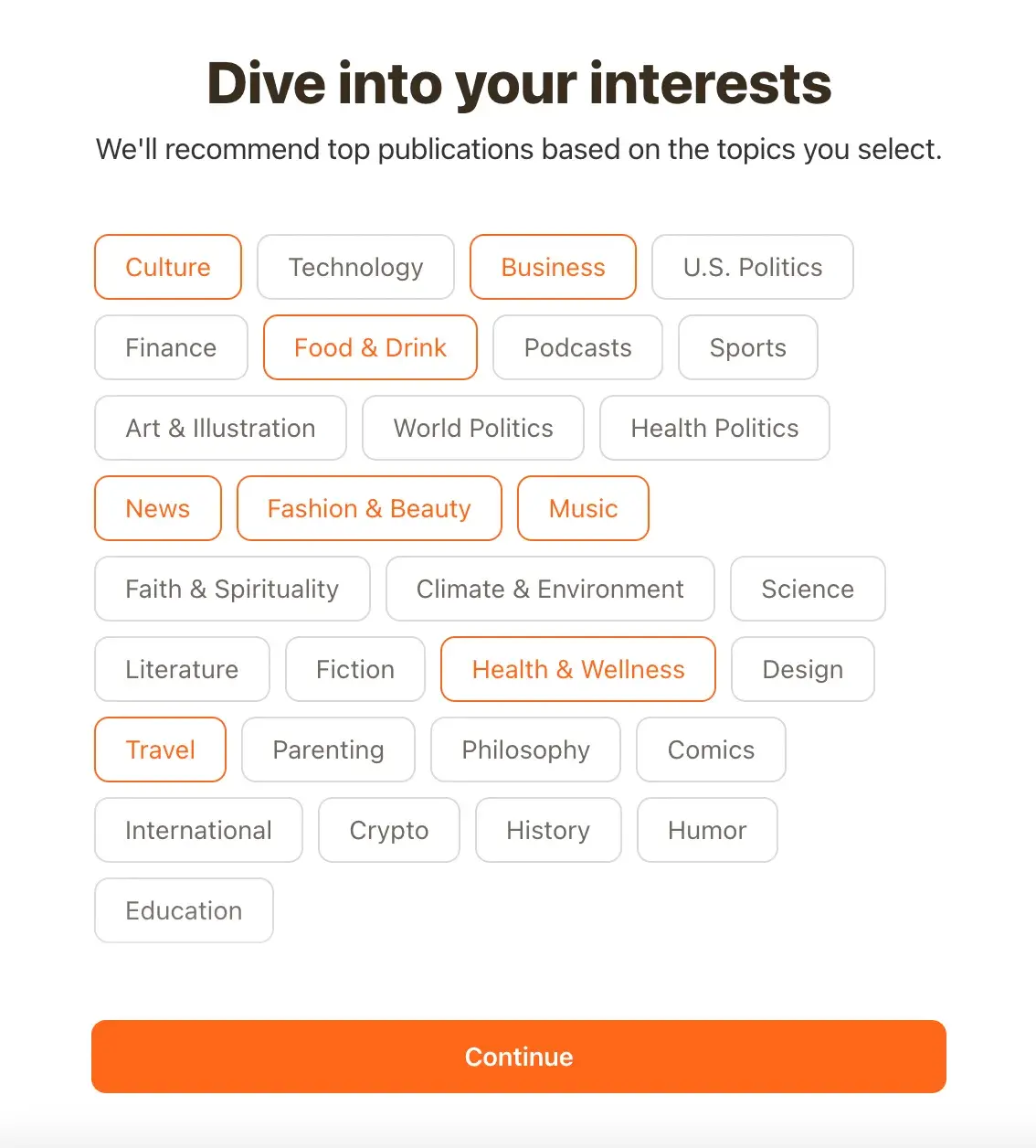
Above, you can see some of the interests I selected when setting up my account. My first suggested publications were curated based on my preferred topics of Culture, News, and Health & Wellness, among others.
You still may need to do some digging, but it will help weed out any subjects you’re not as drawn to.
2. Search for your favorite writers.
Once you’ve created your account, you should see a flood of Notes on your homepage from various creators suggested to you based on your interests.
While you can read through these suggestions and find some writers to start subscribing to, I recommend first searching for writers you already know and enjoy.
I used the “Search” function to search for friends I knew had a Substack to show my love and support. Then, I searched for some of my favorite writers to see if they happened to have a Substack.
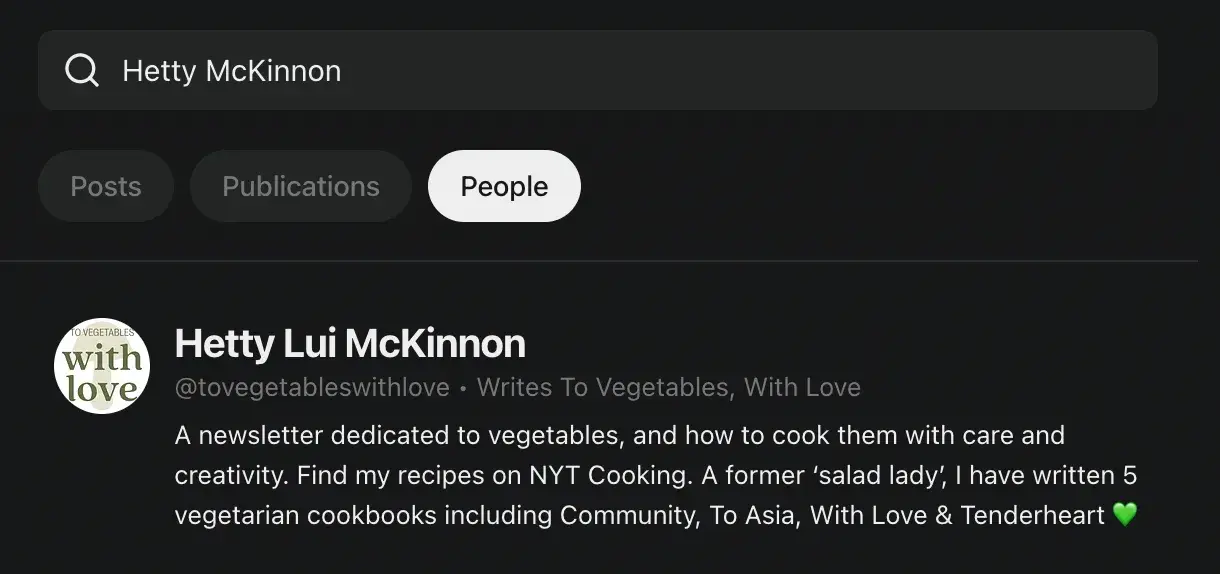
Hetty Lui McKinnon is one of my favorite New York Times Cooking recipe developers and cookbook authors, so I quickly found and subscribed to her Substack.
You can repeat this process for whatever writers you would like, and it’s a simple way to educate the platform on the kinds of publications you’d be interested in.
Pro tip: Wait to become a paid subscriber to any accounts unless you’re already a die-hard fan. Many writers will have a free subscription option, even if it limits the content you can access, and it can help you get a sense of their Substack before you fully commit to paying.
While I’d love to financially support every writer, I want to make sure I pick and choose the publications that most speak to me before putting down my credit card.
3. Explore relevant new writers.
Once you’ve subscribed to some already-known writers, you may want to find new writers who poke your fancy. This is where you can use the Explore feature again.
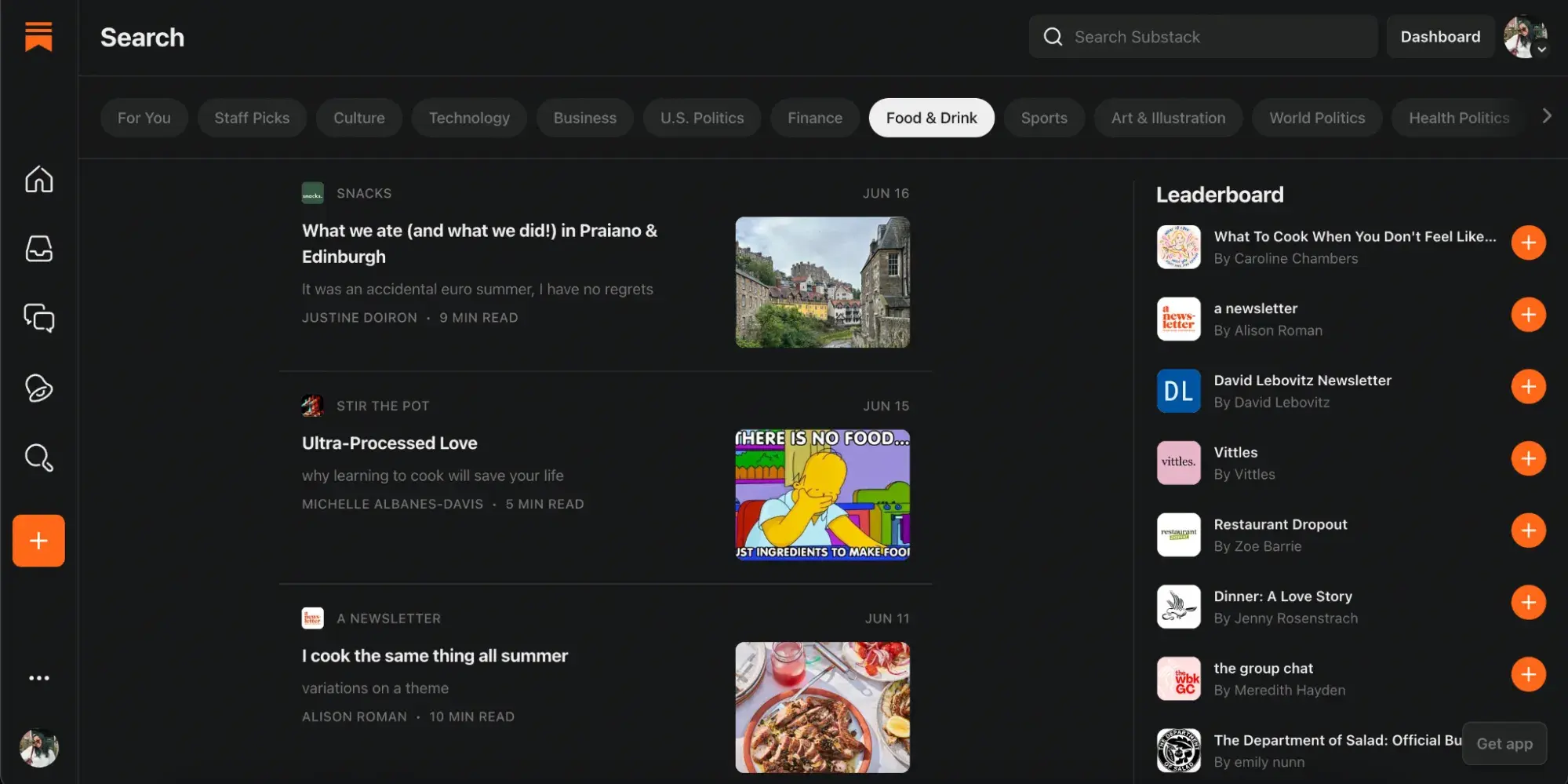
Here, you can browse under the For You tab, which includes publications that Substack thinks will align with your interests. Otherwise, you can look through Staff Picks or, my personal favorite, by topic, as I did in the example above by clicking Food & Drink.
This is especially helpful if, as a reader, you have made a Substack to read more about a particular subject. I’m interested in spicing up my home cooking, so I clicked on Food & Drink to filter for food-related content.
Another great feature is the Leaderboard on the right-hand side, where you can view some of the top publications within that topic. It’s a quick and easy way to find and subscribe to some of the most popular writers without scrolling mindlessly.
4. Download the Substack app.
I highly recommend using the Substack app instead of the desktop interface, if you’re not already. The app mimics a social media platform and makes some of the lengthier posts less intimidating to read.
It’s much easier to scroll through suggested publications on the app and subscribe to the ones you prefer. You’ll get an email notification when you subscribe to someone’s publication, alerting you that you’ve subscribed to a free plan but have options to upgrade your subscription.
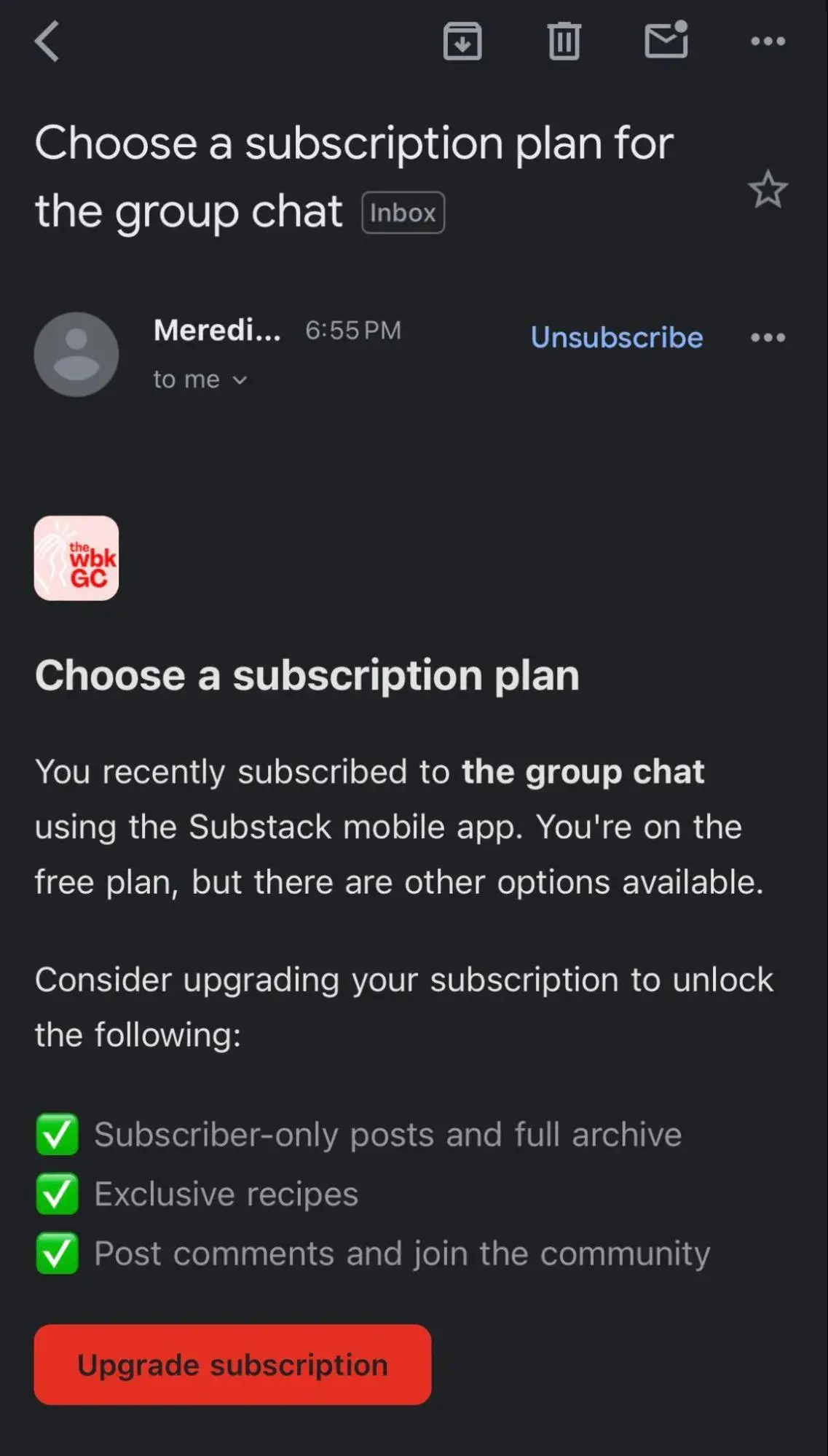
I prefer to receive push notifications from the app, so I turned off email notifications, but you have the option to keep both.
What I also appreciate about the app interface is that Notes from both subscribed and suggested publications appear in chronological order, similar to your Facebook Timeline or X Feed. This helps Substack feel natural and current, with the ability to catch up on the latest updates first.
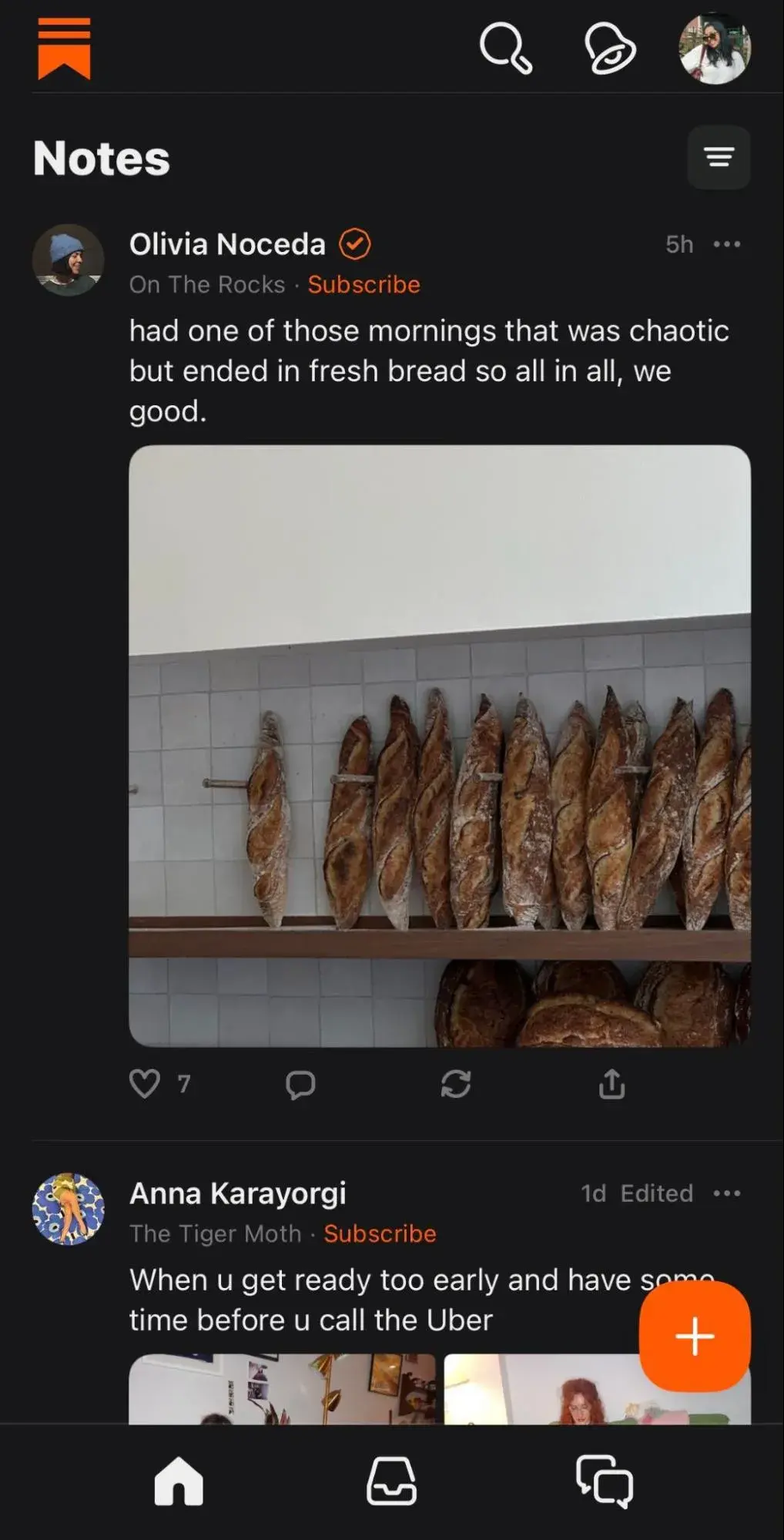
5. Get involved in the community.
I’m in a book club, and I’ve discovered how much more excited I get to read a new book when I know I will get to discuss it for hours with my friends. Humans are naturally social beings, and there is immense satisfaction in the discussion of thoughts and sharing of ideas.
I think this is why the comments sections in Substack publications are such a selling point for writers and readers alike. And since Substack is a platform people gravitate to for specific intentions, rather than a large public medium like social media, the discourse is much more forgiving and thoughtful.
It’s a place where you can voice your reflections without fear of societal shame and cheer on beloved writers directly, as you can see below in a comments thread on one of Alison Roman’s Substack posts of readers congratulating her on opening a grocery store in upstate New York.
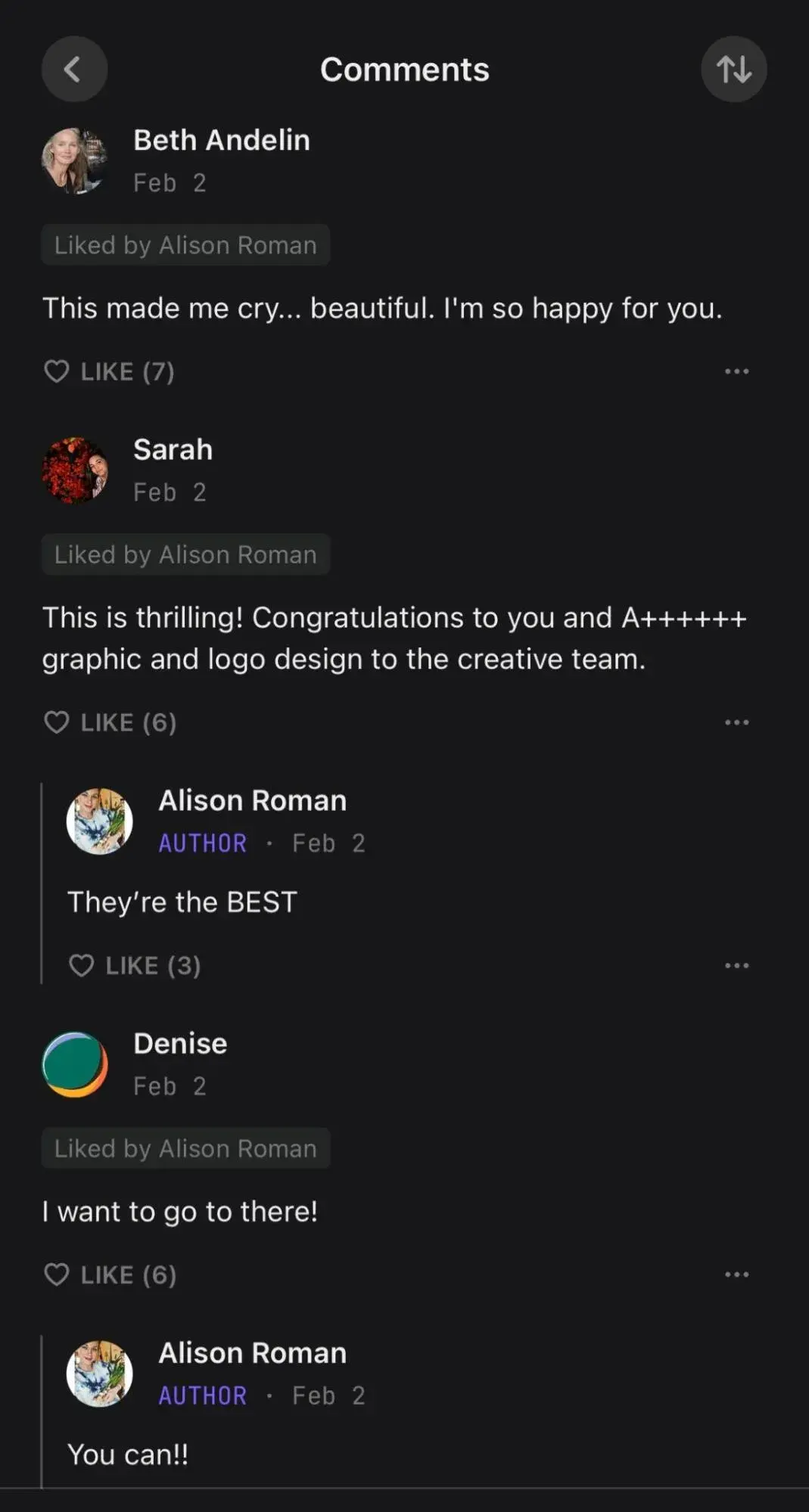
Substack Best Practices
My experience testing Substack was incredibly eye-opening. It’s an amazing opportunity for writers of all genres and levels of fame to publish their work in a unique space for dedicated, paying readers.
Of course, just because it’s a recipe for success doesn’t mean we all have the right ingredients. See below for my four best practices to help get your Substack off the ground and running.
1. Select a topic that you can continuously deliver on.
What makes an idea unique? It seems you can’t imagine anything these days that doesn’t already exist — I recently expressed how cool it would be if you could “test out” a book to see if you like it before making a purchase, then realized that’s what a library is for — which can make it difficult to find your Substack niche.
My advice: Pick a topic you could write almost endlessly about. Don’t choose a genre that is too niche just to try to make your publication stand out. It’s essential to find a balance between a broad enough topic that allows for continuous ideation and a hook that makes your content unique to you.
Karen Cherry wrote, “For your Substack publication to be successful, you must have something of value to offer your subscribers.”
Cherry goes on to list five niches you can align with, which are educational (teaching skills), informational (teaching information), entertainment (providing humor, nostalgia, or joy), time-saving (bringing everything they need into one place), or money-making (sharing tips for investing or businesses).
You can select any topic you like, so long as it continuously delivers on one of the above goals. This can also help you uncover why you are starting a Substack, what you hope it does for readers, how it will compare to other publications, and how it can help you make money.
Take former NBA player Kareem Abdul-Jabbar, who has since started a Substack. He told CBS News, “There are times when you don‘t have any choice but to speak the truth…I’m at this point in my life, and this is exactly what I have to do.”
While not all writing needs to feel quite as revolutionary, it’s an important message that what you write about on Substack should be something you enjoy, appreciate, and find important.
2. Publish often and consistently.
Summer Brennan wrote, “Someone [told me] it wasn’t fair to those who did not have the bandwidth to publish very often to have to compete with more established writers. They thought they should be given some kind of leg up by the platform, so they could receive the same attention and growth.
While I can certainly relate to the frustration… the reality is that if you want to build a readership, you do have to publish.”
Achieving success as a writer on Substack while not an already-famed writer means you may need to achieve some sort of virality or at least strong shareability to grow your subscriber base. The more often you publish, the more likely you are to post something that resonates and increases your recognition.
If you post something that goes “viral” — be warned that virality may look much smaller on Substack than on X — keep up the momentum. Ride the coattails of that popular post and use it as an opportunity to encourage readers to keep tuning in for more of the same.
If you are trying to produce a high volume of posts and struggling to come up with innovative formats and styles, check out our complete collection of content creation templates that can be applied to all forms of content.
3. Connect and build relationships with other content creators.
Being a writer can often feel like a lonely, independent job. It’s something you do every day by yourself, and you don’t typically receive live feedback. But with Substack, you can connect with a wide ecosystem of writers and readers.
Subscribing to other Substacks is essential for a writer. It shows your willingness to support other people in your industry, and reading their publications can shed some light on different best practices and help you play with style, length, and formats to attract new, wider audiences.
Commenting on and recommending other publications is a great way to connect with and show your support for other writers and build your network, especially in your early days. This will likely encourage those writers to check out your work and give you the same badge of approval.
Substack is a welcoming place with room for everyone. Don’t treat it like a competition — when your network grows, you grow with it, so expand your network as much as possible.
4. Don’t take it too seriously.
I’m a writer because I love to write (you can read more about that in my inaugural Substack post). I hope that anyone who writes finds some joy in it, even if it brings frustrations and worries. Sometimes, you just need a spark of inspiration to switch up your writing and make it feel fresh.
Sophia Efthimiatou, the Head of Publisher Relations at Substack, said it best:
“What will you write about? Who cares… You would think known writers with large audiences have it easy here, but the pressure to succeed is felt more among them. The stakes are low if you are not at all known. There is no audience to lose, only one to gain. And gain you will.
Perhaps when you start your only subscribers will be your best friend, your lonely neighbor, and your aunt—who can’t even read English. And then, one day, a fourth subscriber will roll in, a total stranger. That person will be there just to read you.”
If you are starting a Substack primarily as a new means of income, that is of course serious and something to take seriously. But it’s very possible to be serious and fun. Take some risks and try something new. You can always try again after.
The important thing is that your audience will come and grow, especially if you have something to say and a genuine way of saying it.
(Sub)Stacks of Opportunities
I didn’t expect to love Substack as much as I did. I truly see the vision and why it has more than 20 million monthly active subscribers.
There is a wide breadth of content to be consumed, from hilarious fictitious tales to hard political news to travel tips for every corner of the world. There is a place for every writer and every kind of writing, and an audience to match.
I’ve never used a platform that was so seamless to write a post right within the platform. My debut Substack post was one of the fastest pieces of writing I’ve ever written, and a massive part of that was how uncomplicated it was to use Substack.
It was also extremely easy to add my friends and family as subscribers, preview and send the email newsletter of my post, share it on social media, and even customize my Substack profile to make it feel special. I’ve used Mailchimp and WordPress, and neither is as effortless to use or track stats.
While I created my Substack to test it for this blog post, I will absolutely continue using it to publish some of my more personal and creative writing (If you feel so inclined, I’d appreciate a subscribe).
I encourage any writers and content creators to give the platform a chance; it can bring your audiences from blogs, social media, or other places to a much more collaborative, accepting environment.
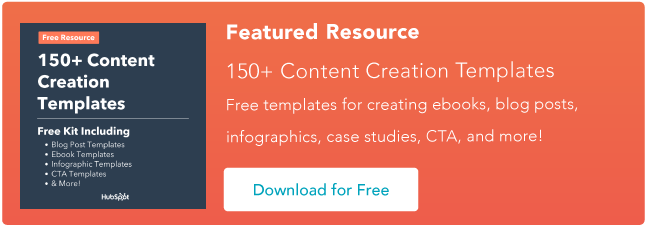
![]()
If Hubspot is of interest and you'd like more information, please do make contact or take a look in more detail here.
Credit: Original article published here.
